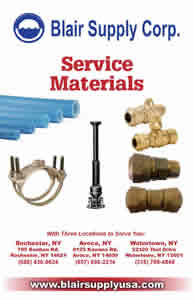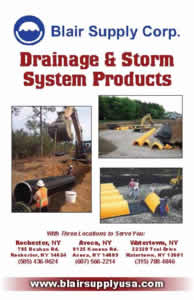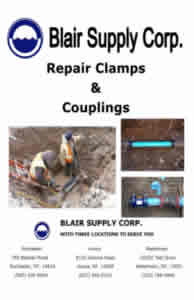Blog
The Best Materials To Use for Water and Wastewater Treatment
Constant upkeep on water and wastewater infrastructure continues to be a challenge as there are many older systems around the country that are deteriorating and becoming out of date. To address these repair issues, engineers and technicians must adopt new technologies that offer more economical installation, higher durability and reduced total life-cycle costs. Thankfully technology has improved water and wastewater treatment systems over the last 50 years.
Why You Should Replace Your Water and Wastewater Systems
Old water and wastewater systems can fail and create an ecological disaster. In fact, industrial companies and municipalities that fail to properly treat water and wastewater can potentially harm both the environment and make people sick. If your company or government body is caught improperly treating wastewater can cause you to be fined thousands if not millions of dollars, have lawsuits filed against you or your company and in extreme cases, people can be sentenced to jail time.
But How Do You Choose the Best Wastewater Treatment System For Your Plant?
There are many factors you will need to consider when choosing a wastewater treatment system. Two of the main ones are:
- What are the characterizations of the production facility?
- What are the governmental regulatory requirements for discharge from the plant?
What Are The Regulatory Requirements For Discharge From The Plant?
This is one of the most important aspects to consider when looking at treatment systems. Different municipalities have different bylaws when it comes to wastewater treatment and should be taken into consideration.
How Does Your Facility Waste Determine Your Ideal Wastewater Treatment System?
Obviously one big factor that determines what system to use is the quality of the equipment used in the system. But quality does further than the type of parts or metal used.
Here are some important questions to address:
- Does the system process food that leaves the wastewater heavy in organic materials or other by-products such as oil and grease?
- Does the facility’s process include the manufacturing of metals that contaminates the wastewater with metals such as zinc, copper iron, lead, and nickel?
- Are there high levels of inorganic contaminants that need to be removed?
Releasing Wastewater into The Environment
If your facility plans on using a water or wastewater treatment system, you need to abide by the National Pollutant Discharge Elimination System. These permits are granted to enforce under the Clean Water Act. It places limitation on what can be discharges and sets rules and enforces reports and government oversight. This permit is to ensure that harmful pollutants are not released into the environment.
Discharging Wastewater into The Local Municipality
You should look at your local municipal regulations to determine the correct way to set up a wastewater system. In some areas, the municipality can help dispose and treat wastewater. Check with your local government or publicly owned treatment works (POTW) to be sure you’re meeting their qualifications. Your wastewater treatment will need to remove the contaminants they don’t allow or, again, it can cost you thousands if not millions of dollars in fines. You will then have to either alter or fix the facility’s wastewater treatment system and remove any contaminants present to acceptable levels that are required when discharging into the local POTW.
Water Treatment Piping Options
Much of a wastewater system is made up of pipes and therefore are very important. Carbon steel and stainless steel have traditionally been the best materials for water and wastewater applications because of their durability and strength. However, after years of field use, issues with corrosion, scaling and gradual pressure loss lead to excessive repair costs for underfunded facilities. The high cost for stainless steel can also put replacement of aging systems out of reach.
As a result, chlorinated polyvinyl chloride (CPVC) is a thermoplastic produced by chlorination of polyvinyl chloride resin, which is flexible, durable and can withstand higher temperatures. CPVC is emerging as the next generation of pipe materials used water and waste applications. They are finding that CPVC is not only highly resistant to wear and tear throughout the process but is also cheaper to produce and install. With its corrosion resistance, CPVC has proven to be highly reliable and cost effective in all types of wastewater treatments.
Outdoor Weathering in Water Treatment Systems
Since a large amount of wastewater and water treatment systems are installed outdoors, the effect of weather elements like snow, wind and sunlight on the material must be taken into account.
Weather elements can cause degradation to many non-metallic piping systems causing durability issues. Chlorinated polyvinyl chloride, however, contains UV-protective levels of both carbon black and titanium dioxide to protect against sunlight. Chlorinated polyvinyl chloride is also protected against both cold and heat that could cause failure in other types of piping material.
Blair Supply Has The Best Materials To Use for Water and Wastewater Treatment
Blair Supply Corporation has been in business since 1958 and is considered one of the top distributors in the water and wastewater industry, participating in over 25 local municipal organizations as well as AWWA, Rural Water Association, WASDA (Water & Sewer Distributors of America), NFIB, and Chamber of Commerce. The company has been in the family for three generations. In the 1940s, the company began with construction of waterlines.
Today, Blair Supply sells and rents specialty equipment such as tapping machines and fusion machines for High Density Polyethylene (HDPE) Products market and continues to remain an innovator and leader in the ever-changing water systems utility construction business.






